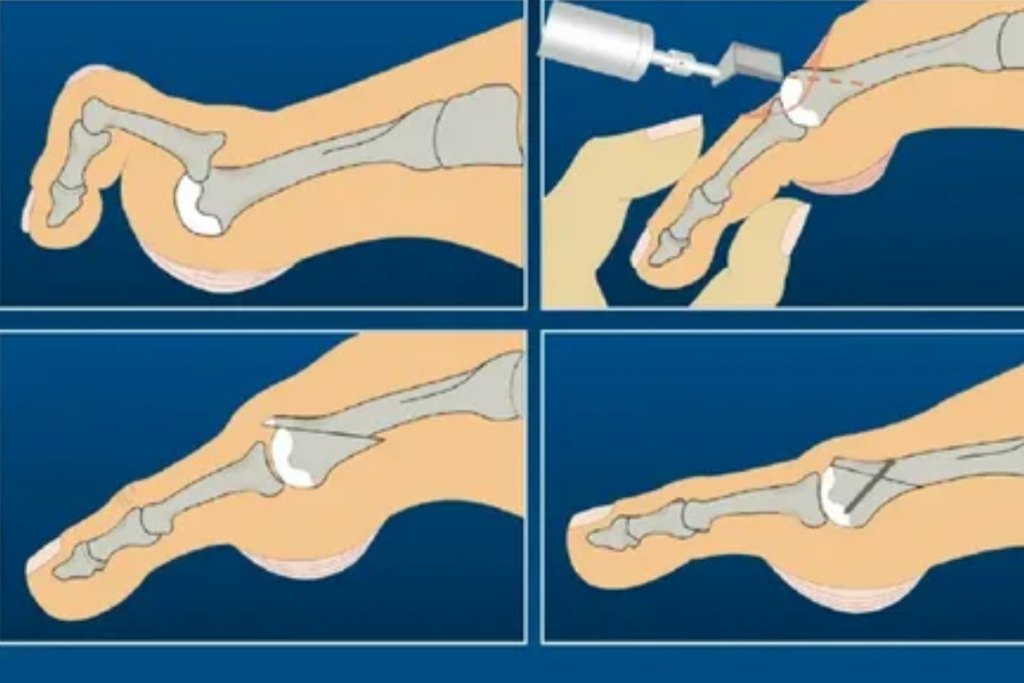
Osteotomy is a surgical procedure that involves cutting and reshaping bones to correct alignment and relieve pain, often performed on the knee or hip. While this surgery can offer significant benefits, such as improved mobility and reduced discomfort, it also carries potential complications. Understanding these complications and knowing how to manage them is crucial for patients and healthcare providers to ensure successful outcomes.
Common Complications After Osteotomy
- Infection
- Description: Infections can occur at the surgical site, leading to redness, swelling, and fever. In severe cases, it might extend to deeper tissues or even the bone (osteomyelitis).
- Management: Early detection is vital. Prophylactic antibiotics are usually administered before and after surgery. If an infection occurs, it may require additional antibiotics or surgical intervention to drain abscesses.
- Blood Clots (Deep Vein Thrombosis)
- Description: Blood clots can form in the veins of the legs due to reduced mobility post-surgery, potentially leading to a pulmonary embolism if they travel to the lungs.
- Management: To prevent clots, patients are often given anticoagulant medications and encouraged to perform gentle leg exercises and walk as soon as possible. Compression stockings can also be beneficial.
- Nerve Injury
- Description: Nerves surrounding the surgical area can be damaged, leading to numbness, tingling, or weakness in the affected limb.
- Management: Most nerve injuries are temporary and resolve with time. Physical therapy can help restore function. Severe cases may require further medical evaluation or surgery.
- Nonunion or Delayed Union
- Description: Sometimes, the bone fails to heal properly, either not healing at all (nonunion) or taking longer than expected (delayed union).
- Management: Ensuring proper immobilization and following post-operative care instructions are crucial. In some cases, additional surgery or bone grafting may be necessary to stimulate healing.
- Hardware Problems
- Description: The plates, screws, or rods used to stabilize the bone may become loose, break, or cause irritation.
- Management: Regular follow-up appointments are important to monitor the hardware. If issues arise, a secondary surgery might be needed to adjust or replace the hardware.
- Joint Stiffness
- Description: Post-surgical stiffness is common, particularly if the joint is not moved enough during recovery.
- Management: Physical therapy is essential to maintain range of motion and prevent stiffness. Adherence to prescribed exercises can significantly improve outcomes.
- Pain
- Description: Pain at the surgical site is expected, but chronic pain or pain disproportionate to the surgery can indicate complications.
- Management: Pain management includes medications, physical therapy, and sometimes additional interventions like nerve blocks or revision surgery if the pain is due to a mechanical issue.
Preventive Measures
- Preoperative Planning
- Thorough assessment and planning can minimize risks. This includes evaluating the patient’s overall health, understanding their medical history, and planning the surgical approach carefully.
- Patient Education
- Educating patients about the procedure, potential complications, and the importance of adhering to post-operative care instructions can significantly improve outcomes.
- Postoperative Care
- Effective pain management, early mobilization, and regular follow-up visits are crucial. Monitoring for signs of complications and addressing them promptly can prevent more severe issues.
Role of Physical Therapy
Physical therapy plays a pivotal role in recovery after an osteotomy. A tailored rehabilitation program helps restore strength, flexibility, and function. Physical therapists work closely with patients to ensure exercises are performed correctly, reducing the risk of complications such as stiffness and promoting optimal healing.
Importance of a Skilled Surgeon
Choosing a skilled and experienced surgeon is paramount in reducing the risk of complications. A proficient surgeon will ensure precise bone cutting and alignment, appropriate selection and placement of hardware, and meticulous surgical technique.
Summary
Osteotomy is a beneficial procedure for correcting bone alignment and relieving pain, but it comes with potential complications. Awareness and proper management of these complications are crucial for successful recovery. Common complications include infection, blood clots, nerve injury, nonunion, hardware problems, joint stiffness, and pain. Effective management strategies involve preoperative planning, patient education, vigilant postoperative care, and physical therapy.
Selecting a highly qualified surgeon is essential for minimizing risks and ensuring the best outcomes. Dr. Ashish Suryawanshi is one of the best orthopedic surgeons in Pune, with his clinics located in Nigdi and Thergaon. His expertise and dedication to patient care significantly enhance the success rates of osteotomy procedures, making him a top choice for individuals seeking orthopedic care in the region.




